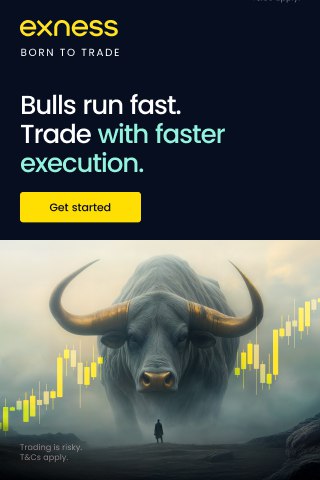
4 minute read
Tips for Accurate Calculations Using Exness Trading Calculator: Master Your Risk Management
The Exness Trading Calculator is one of the most practical tools available to traders using the Exness platform. It helps you estimate essential metrics like margin, pip value, profit/loss, and swap fees before placing a trade. But to get truly accurate results, you must know how to use it properly.
In this guide, we’ll share expert tips for using the Exness Trading Calculator effectively so that your decisions are based on precise, real-time data.
👉 Access the Exness Trading Calculator here

1. Always Select the Correct Instrument
Before entering any trade information, make sure to:
Choose the exact currency pair or asset you want to trade
Understand the spread behavior of that asset (some pairs are more volatile)
Confirm whether the asset includes swaps, commissions, or specific leverage rules
Each asset behaves differently, so selecting the wrong pair will return inaccurate margin and pip calculations.
2. Match the Account Currency
The Exness Calculator allows you to choose your account’s base currency (USD, EUR, GBP, etc.). For accurate results:
Set the calculator to match your Exness account’s currency
This ensures correct pip value and profit/loss projections
Avoid currency conversion miscalculations if you trade non-USD instruments
💡 Example: If your account is in EUR, and you calculate trades in USD pairs, the calculator will show exact values converted to your base currency.
You may also need:
How To Open demo Account in EXNESS app
How To Change EXNESS chart to TradingView
How To Open demo Account in EXNESS app
3. Enter the Correct Leverage
Leverage impacts your margin requirement dramatically. Use the same leverage setting you’ve applied in your trading account:
1:100
1:500
1:2000
Unlimited (for eligible users)
Wrong leverage entries will over- or underestimate the amount of capital needed, potentially causing underfunded trades.

4. Adjust the Trade Size (Lot) Thoughtfully
Choose your lot size based on your strategy:
Micro: 0.01 lots
Mini: 0.10 lots
Standard: 1.00 lots
Even small changes can affect margin and pip value. Use the calculator to compare trade size impacts on each pair.
📌 Pro Tip: Start by simulating with 0.01 lots and scale up until you find the best risk-reward setup.
5. Include Stop Loss (SL) and Take Profit (TP) Prices
For a full picture of potential outcomes:
Use entry price, SL, and TP to simulate net profit/loss
Helps estimate reward-to-risk ratio in advance
Allows you to adjust trade direction or strategy before execution
👉 Try this directly in your Exness account
6. Watch Out for Swap Fees
If you're holding positions overnight, check the swap (rollover) section:
The calculator shows long and short swap fees
Swap-free accounts will show alternative overnight costs
Helps you avoid hidden charges that eat into profit
Tip: Avoid high swap trades on Wednesdays (triple swaps apply due to weekend rollover).
7. Calculate Multiple Scenarios
Run several test cases before entering a position:
Compare different lot sizes and leverage levels
Test with both bullish and bearish setups
Use high-volatility pairs (like GBP/JPY) and compare with stable pairs (like EUR/USD)
Scenario modeling improves accuracy and helps prevent emotional trading.
8. Understand What Each Output Means
Here’s a quick breakdown:
Pip Value: Shows how much one pip move costs or earns
Margin: Capital required to open and hold the trade
Swap: Fee or income for overnight holding
Profit/Loss: Projected outcome based on your SL/TP prices
Knowing how to interpret these correctly helps you set tighter stops and smarter targets.
9. Double-Check During High Volatility Events
During economic announcements or unexpected news:
Spreads widen
Swaps may increase
Prices become more volatile
Use the calculator right before entry to reflect the most up-to-date market conditions.
🛑 Avoid relying on previous calculations—re-calculate right before you trade.
10. Use It with Your Trading Journal
Professional traders record all trades. Use the calculator’s outputs to:
Log pip value and expected profit/loss
Analyze which trades worked based on their projected vs. actual outcome
Identify patterns in swap charges, leverage impacts, or misjudged lot sizes
This practice improves long-term consistency.
Frequently Asked Questions (FAQs)
Q1: Is the Exness Trading Calculator accurate for all instruments?
Yes, it covers forex, metals, crypto, indices, and stock CFDs with live data accuracy.
Q2: Can I use it for demo trading?
Absolutely. It works perfectly with demo accounts to test strategies.
Q3: Is there a mobile version?
Yes. You can access it from any mobile browser. It works seamlessly on Android and iOS.
Q4: What if I have a swap-free account?
The calculator will still show costs, but your account may reflect flat-rate charges or no swaps depending on settings.
Final Thoughts: Use the Calculator Like a Pro
The Exness Trading Calculator isn’t just a helpful tool—it’s an essential part of risk management and trade planning. When used correctly, it gives you clarity, control, and consistency in every position you open.
👉 Open your Exness account and start using the calculator today
See more:
Is high leverage safe in Exness trading?
Benefits of Being an Exness Partner
How to Use Exness Trading Calculator to Calculate Profit










